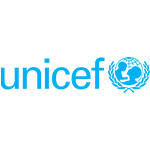Redesigning the Play Kits that Support Children in Emergencies
HIGHLIGHTS
- Children in areas affected by disaster often miss out on crucial opportunities to play, be creative, and develop skills that will help them throughout their lives.
- UNICEF developed a kit to help children in emergency settings engage in play, but due to various behavioral barriers, some children in these settings weren’t benefiting fully from the kits.
- ideas42 worked with UNICEF to update the kit and its accompanying manual in order to help as many children as possible develop, create, and play, whatever their circumstances.
The Challenge
When crises threaten their safety, children are robbed of the experiences they need to develop physical, mental, and psychosocial skills. Although there is important work to be done in preventing these emergencies, there are also ways to encourage healthy psychological development for children who cannot avoid them. In 2009, UNICEF developed the Early Childhood Development Kit (ECD Kit) for Emergencies: a box of over 40 items, from puzzles to books to puppets, designed to provide children with access to play. Since the kit’s inception, UNICEF has worked with over 100 of its country offices to integrate over 185,000 kits into existing ECD programs, where frontline workers teach and care for children.
Our Approach
UNICEF recently conducted an evaluation of the ECD Kit and identified three ways in which frontline workers can use the kits more effectively:
- Facilitate more play-based learning among children in emergencies.
- Specifically engage children with disabilities.
- Engage caregivers in play-based learning with their children.
To help support frontline workers in completing these behaviors, UNICEF partnered with ideas42 to redesign the kit through a behavioral lens—reimagining everything from its contents to its packaging.
Results
We engaged a variety of UNICEF team members and experts from early childhood development organizations in a series of co-design workshops, which focused on redesigning the kit’s content, packaging, and accompanying manual. As an output of the workshops, we provided UNICEF with a final set of carefully crafted recommendations, which they can use to make decisions about what adjustments to make to the kit and manual. Some of the recommendations we provided were:
- A simplified manual with concise, visual instructions on how to use the kit, which aims to reduce the mental energy required of frontline workers to engage with the kit.
- Revamped kit packaging that is more lightweight and mobile, decreasing hassles and making the kit easier to transport and use.
More information on our recommendations can be found here.
Takeaway
In the face of record humanitarian needs, the wide-reaching UNICEF Early Childhood Development Kit for Emergencies has immense potential to provide the world’s most vulnerable children with the experiences they need to thrive. Using a behavioral lens to redesign the kit can help better support frontline workers to facilitate play, and may have a positive effect on the learning outcomes of young children, including children with disabilities, in emergency settings. Furthermore, insights gleaned from the co-design process illuminate novel solutions that may be applicable to supporting busy frontline workers who work in other topical areas, or beyond the humanitarian context.
Interested in our work applying behavioral science to global development? Email info@ideas42.org, follow us on LinkedIn, or tweet at @ideas42 to join the conversation.
Partners










